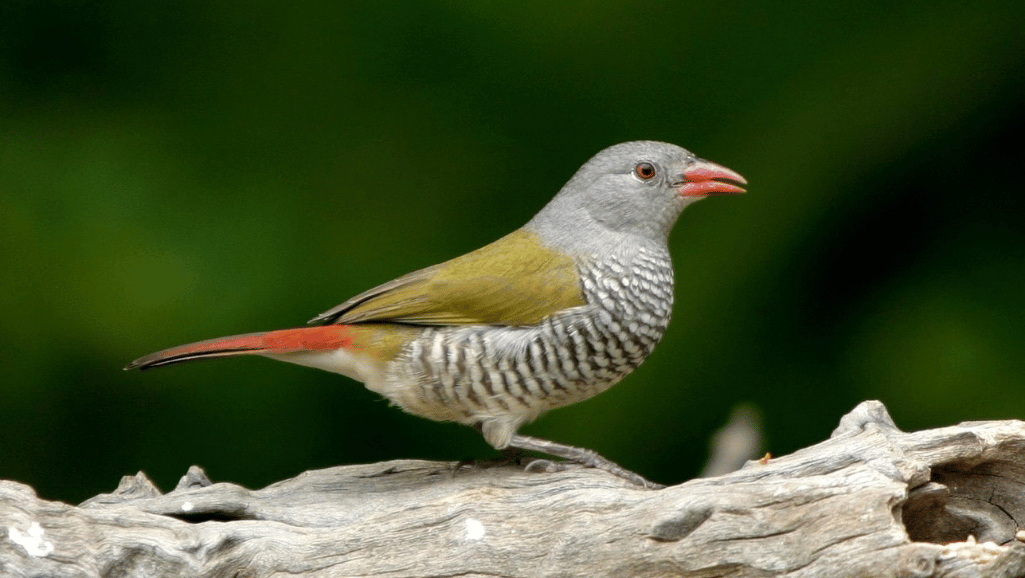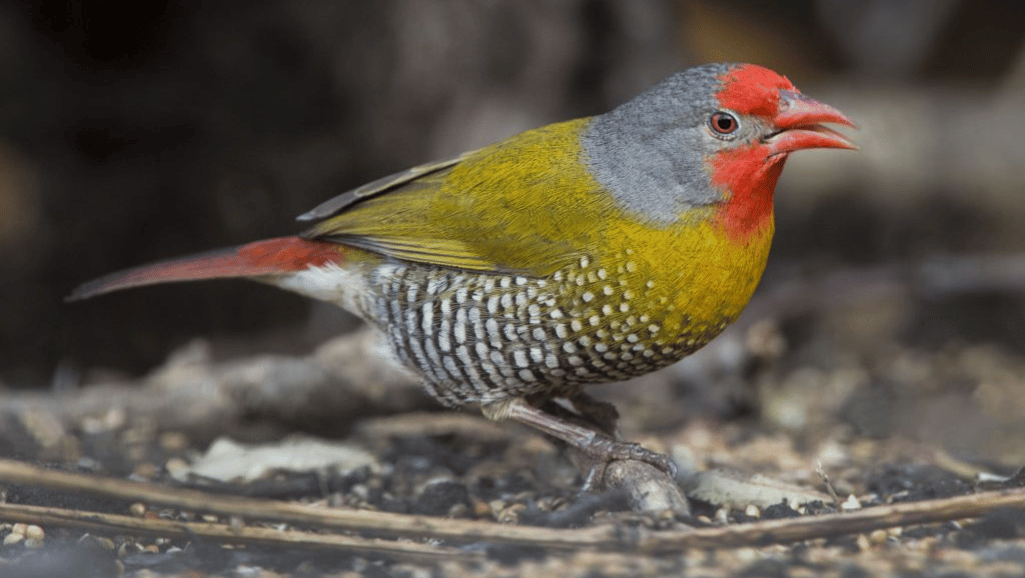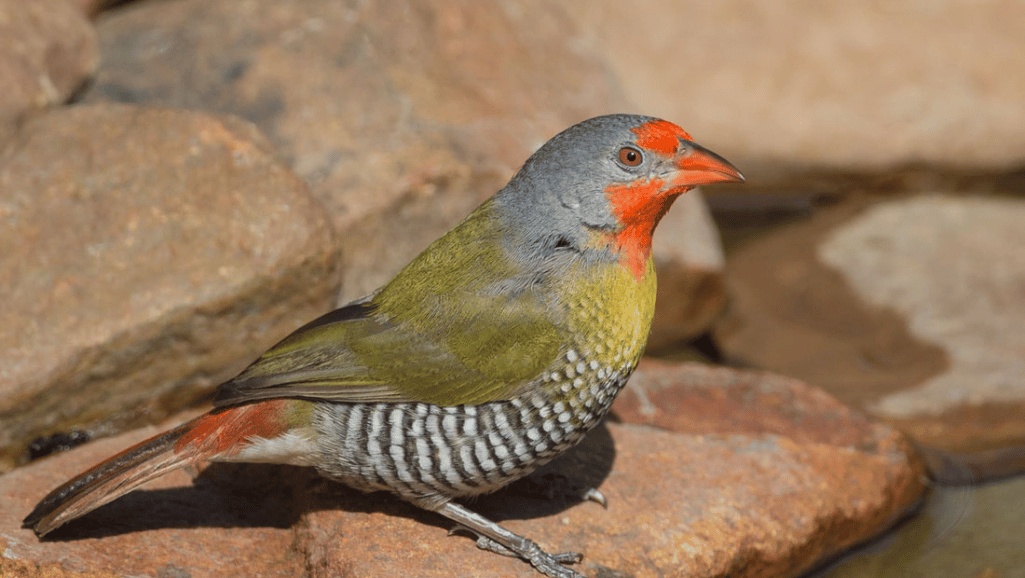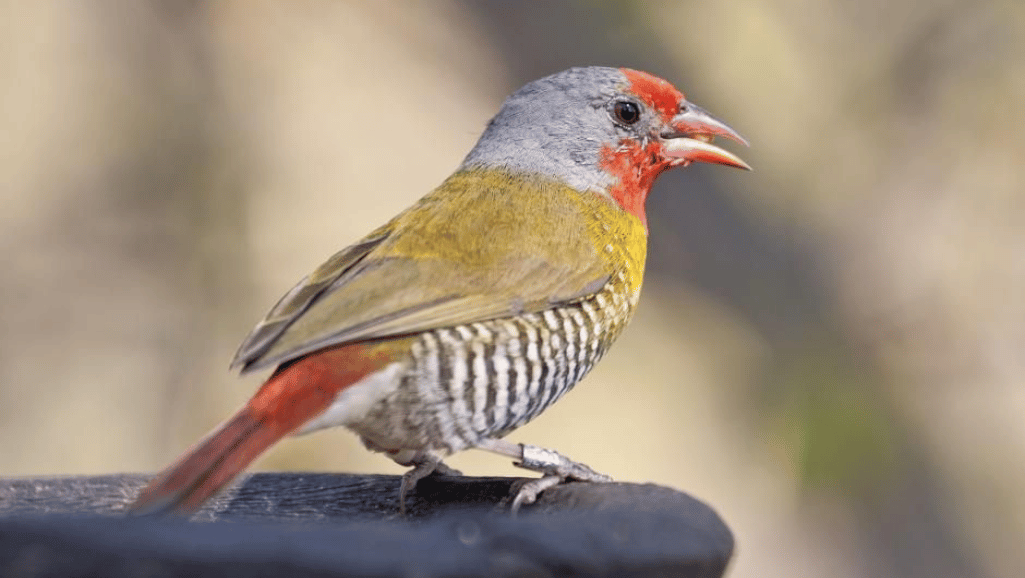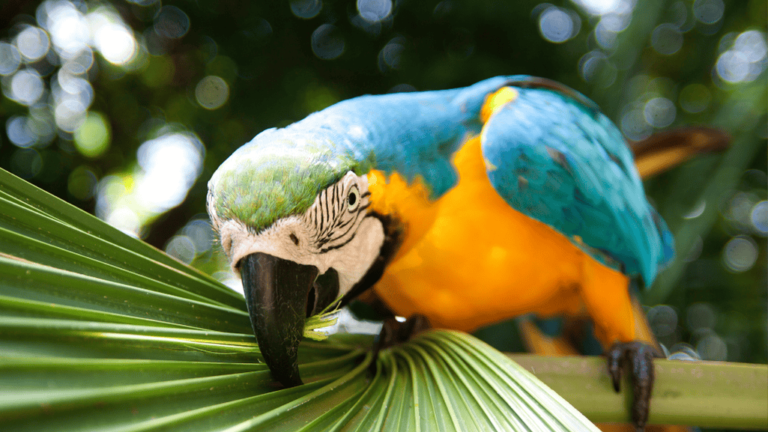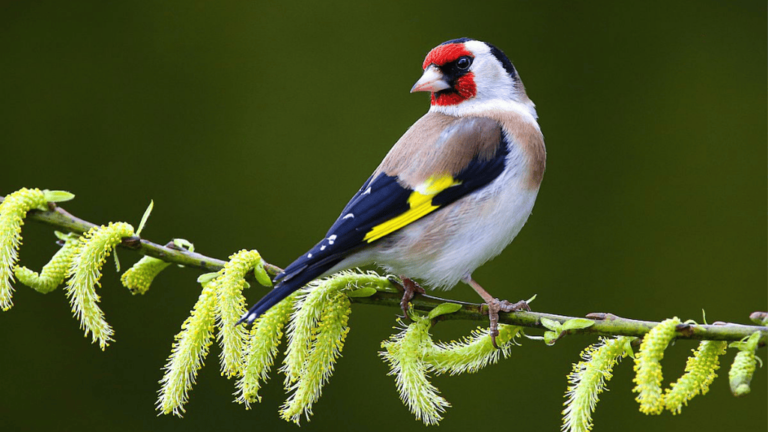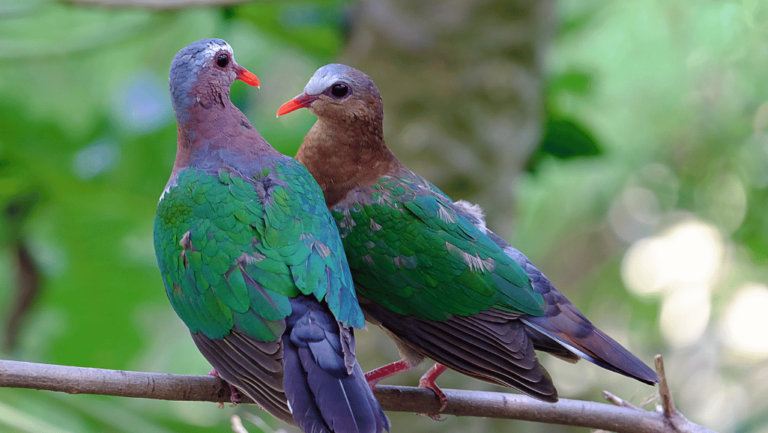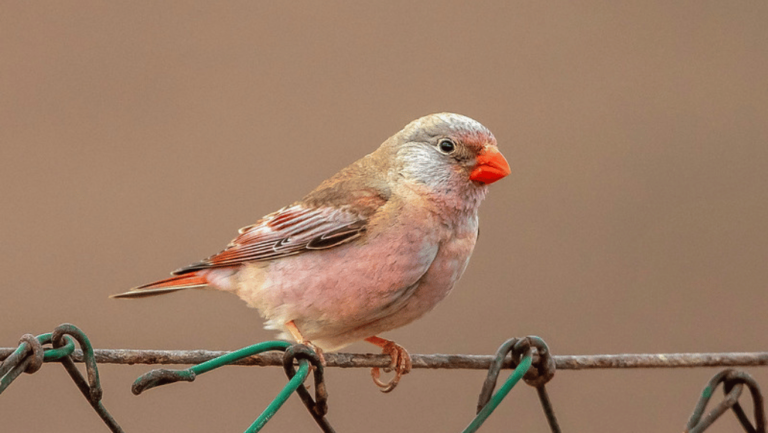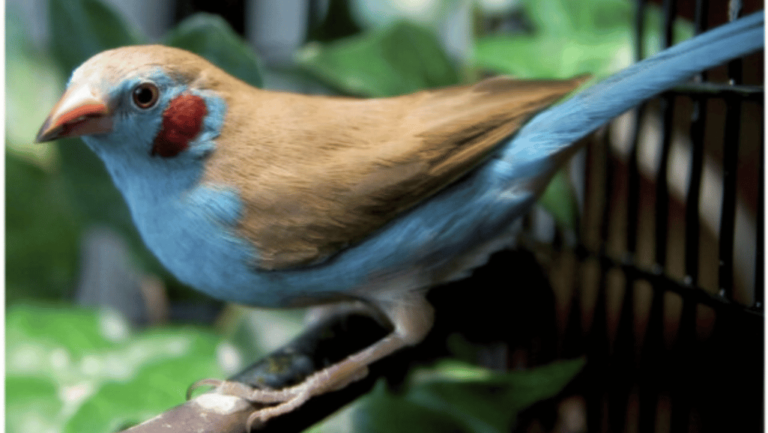Welcome to the fascinating world of the Melba Finch! Known for its beautiful melodies and vibrant plumage, this species of songbird captivates bird enthusiasts and researchers alike. In this article, we will explore the habitat, behavior, and conservation of the Melba Finch, shedding light on its contribution to avian biodiversity.
Key Takeaways:
- The Melba Finch is a species of songbird known for its vibrant plumage and melodious songs.
- It is native to certain regions of Africa and can be found in diverse habitats such as woodlands, savannas, and grasslands.
- Melba Finches primarily feed on seeds and have adapted specialized beaks for cracking open tough shells.
- They have interesting breeding habits and tend to stay within their preferred habitat throughout the year.
- Conservation efforts are crucial to protect the Melba Finch and other finch species from habitat destruction and climate change.
Vivid Colors and Seed-Eating Diet
One distinctive feature of Melba Finches is their vibrant colors, which make them visually appealing. Despite these toxic-looking colors, Melba Finches are not poisonous. In fact, they are seed-eating songbirds and belong to the family of finches called Estrildid finches. Their diet primarily consists of various seeds, such as grass seeds, and they have adapted specialized beaks for cracking open these seeds. This finch ornithology study has shown that their diet plays a crucial role in their overall health and reproductive success.
Seed-Eating Songbirds
Seed-eating songbirds, like Melba Finches, have evolved a specialized preference for seeds in their diet. The digestive system of these birds is adapted to efficiently process and extract nutrients from seeds. This adaptation allows them to thrive in environments where seeds are abundant, such as grasslands and woodlands. Their beaks are specifically designed to crack open the hard shells of seeds, enabling them to access the nutritious contents inside.
By focusing on a seed-based diet, Melba Finches have access to a consistent and reliable source of nutrition. Seeds provide essential nutrients, including proteins, fats, and carbohydrates, which are necessary for their survival and energy requirements. These songbirds have developed various foraging techniques to locate and extract seeds from different plant species, showcasing their adaptability and resourcefulness in the wild.
Finch Ornithology
Finch ornithology is the study of the behavior, ecology, and evolution of finch species. Researchers in the field of finch ornithology have made significant contributions to our understanding of the intricate relationship between seed-eating songbirds and their environment. Through observation, experimentation, and data analysis, scientists have uncovered fascinating insights into the feeding habits, nesting behaviors, and reproductive strategies of finches.
Furthermore, finch ornithology studies have shed light on the impact of environmental factors, such as climate change and habitat loss, on finch populations. These studies play a crucial role in informing conservation efforts and guiding policies that aim to preserve the biodiversity of finch species, including the Melba Finch.
| Benefits of a Seed-Eating Diet for Melba Finches | Impacts of Seed Availability on Melba Finch Populations |
|---|---|
|
|
The image above showcases the vibrant colors of the Melba Finch, highlighting their visual appeal and unique characteristics. These colorful feathers play a significant role in attracting mates and signaling fitness within their species.
Overall, the seed-eating diet of Melba Finches is intricately connected to their vibrant colors and ecological adaptation. By understanding their dietary preferences and the importance of seed availability, we can appreciate the complex interplay between the natural world and the survival of seed-eating songbirds like the Melba Finch.
Breeding Habits and Migration Patterns
Melba Finches exhibit fascinating breeding habits and unique migration patterns. During the breeding season, male Melba Finches engage in elaborate courtship displays to attract their potential mates. These displays include impressively complex songs and the exhibition of their vibrant and colorful plumage, capturing the attention of female finches.
Once a pair has formed, the male and female Melba Finches collaborate in building their nest, preparing a safe haven for their offspring. The female finch then lays her eggs, which they diligently incubate and care for as a team. This cooperative approach to nesting and parenting further strengthens their bond and ensures the survival of their young.
Unlike some bird species that undertake long-distance seasonal migrations, Melba Finches are non-migratory birds. They tend to stay within their preferred habitats throughout the year, focusing on raising their young and ensuring their survival. This behavior allows them to establish a stable presence within their environment and leverage the available resources effectively. By remaining in their familiar territory, Melba Finches can focus on optimizing their breeding success and maintaining their well-being.
Understanding the breeding habits and migration patterns of Melba Finches contributes to our knowledge of avian behavior and the intricate dynamics of their population. By studying these patterns, researchers gain insights into the factors influencing reproductive success and the overall conservation status of these captivating birds.
Conservation Efforts and Finch Conservation Status
Conservationists are deeply concerned about the conservation status of Melba Finches and other finch species. These birds face numerous threats, including habitat destruction, climate change, and deforestation caused by human activities. To counter these challenges, dedicated efforts are being made to protect their natural habitats and raise awareness about the importance of preserving avian biodiversity. Birdwatching enthusiasts also play a crucial role in documenting and monitoring the population trends of Melba Finches, providing valuable data for conservation initiatives.
Threats to Finch Conservation
The conservation of Melba Finches and other finch species is essential due to the following threats:
- Habitat Destruction: The rapid loss of natural habitats, such as forests and grasslands, significantly impacts finch populations. Deforestation and urbanization lead to the fragmentation and degradation of their habitats, resulting in loss of nesting sites and food sources.
- Climate Change: The changing climate and extreme weather events can disrupt the delicate balance of ecosystems and directly affect finch populations. Shifts in temperature and precipitation patterns can alter the availability of food and nesting conditions.
- Human Activities: Activities such as deforestation, agriculture, and mining pose significant threats to finch habitats. Loss of vegetation, pollution, and the use of pesticides further degrade the quality of their habitats and negatively impact their survival.
Addressing these threats requires collaborative efforts from governments, organizations, and individuals to implement sustainable land-use practices and protect critical finch habitats.
Conservation Initiatives
Conservation organizations and researchers are actively working towards the preservation of finch species, including the Melba Finch. Some of the key conservation initiatives include:
- Habitat Protection: Establishing protected areas and nature reserves allows for the preservation of crucial finch habitats. These protected areas provide safe havens where finches can breed, forage, and fulfill their ecological roles.
- Public Awareness and Education: Raising awareness about the importance of finch conservation is crucial for promoting action and garnering public support. Educational campaigns, interactive programs, and citizen science initiatives help engage communities in the protection of finch species.
- Research and Monitoring: Scientists and researchers conduct ongoing studies to monitor finch populations, study their behavior, and assess the impacts of conservation efforts. This research provides valuable insights that guide conservation strategies and inform policy decisions.
By combining scientific research, community involvement, and policy advocacy, conservations strive to ensure the long-term survival of Melba Finches and other vulnerable finch species.
Finch Conservation Status
The conservation status of Melba Finches and other finch species is often assessed based on globally recognized conservation frameworks. The International Union for Conservation of Nature (IUCN) Red List is a widely used assessment tool that categorizes species into different conservation statuses:
| Conservation Status | Description |
|---|---|
| Least Concern (LC) | The population of the species is stable, and no immediate threats are identified. |
| Near Threatened (NT) | The species is close to meeting the criteria for a threatened category. |
| Vulnerable (VU) | The species faces a high risk of endangerment in the wild. |
| Endangered (EN) | The species is at a very high risk of extinction in the wild. |
| Critically Endangered (CR) | The species is at an extremely high risk of extinction in the wild. |
The exact conservation status of Melba Finches may vary depending on their specific population trends, localized threats, and regional assessments. Ongoing monitoring and conservation efforts are crucial for maintaining the finch populations and preserving the delicate balance of avian biodiversity.
The Enchanting Melba Finch in the Natural Opera
The Melba Finch, a captivating member of the passerine bird family, adds its own unique melody to nature’s grand opera. As a passerine bird, belonging to the order Passeriformes, Melba Finches are known for their impressive vocal abilities and melodious songs. These enchanting sounds serve various purposes such as attracting mates and defending territories, contributing to the rich tapestry of sounds in the natural world.
Experience the magic of the Melba Finch’s melodic repertoire, which showcases their remarkable vocal talents. These passerine birds produce harmonious melodies that mesmerize both humans and fellow avian species alike. Their songs reverberate through the air, filling the surrounding landscape with beauty and wonder.
By understanding the role of Melba Finches in the natural opera, we gain a deeper appreciation for the intricate web of life and the significant contribution of avian species to our ecosystem. The Melba Finch reminds us of the extraordinary beauty that exists in the world, each note a reminder of the interconnectedness of nature’s symphony.
| Melba Finch’s Melody Highlights | |
|---|---|
| Melodic Abilities | Impressive vocal talents that distinguish passerine birds like the Melba Finch. |
| Attracting Mates | Enchanting songs used by male Melba Finches to attract potential mates. |
| Defending Territories | Powerful vocals employed to mark and protect their nesting areas. |
| Harmonious Repertoire | A diverse range of mellow tones, trills, and harmonies that form their unique songs. |
The Melba Finch and Avian Research
Researchers and scientists have conducted extensive studies on Melba Finches, contributing to our understanding of avian biodiversity. These studies have provided valuable insights into their behavior, breeding habits, and ecological interactions with their environment.
The research data collected from these studies serve as a foundation for further exploration and comparative analysis in the field of finch ornithology. By studying the intricacies of Melba Finch behavior, scientists can uncover the fascinating life-history strategies employed by these enchanting birds.
Understanding the role of Melba Finches in the ecosystem is essential for effective conservation efforts. By identifying their unique contributions to avian biodiversity, researchers can advocate for the protection of their habitats and prioritize conservation initiatives.
The Importance of Finch Ornithology
Finch ornithology plays a vital role in unraveling the complexities of avian life and understanding the delicate balance of ecosystems. By studying Melba Finches and other finch species, scientists gain valuable insights into their adaptations, ecological roles, and responses to environmental changes.
In addition, comparative studies among different finch species provide crucial knowledge about evolutionary processes, helping scientists answer fundamental questions about biodiversity and the mechanisms driving species diversification.
Avian Biodiversity and Ecosystem Health
The Melba Finch’s contribution to avian biodiversity highlights the significance of maintaining healthy ecosystems. Bird species like Melba Finches serve as indicators of ecosystem health, reflecting the overall well-being of the environment they inhabit.
By monitoring population trends, behavior patterns, and ecological interactions of Melba Finches, scientists can assess the health of habitats and ecosystems. This information is vital for making informed conservation decisions and preserving avian biodiversity for future generations.
| Avian Research Insights | Impact on Conservation |
|---|---|
| Understanding Melba Finch behavior | Guiding habitat protection strategies |
| Uncovering breeding habits | Prioritizing conservation efforts |
| Examining ecological interactions | Enhancing ecosystem preservation |
Note: The data provided in the table showcases the key insights from avian research on Melba Finches and their direct impact on conservation efforts. By studying these vibrant songbirds, scientists gain valuable knowledge that contributes to the preservation of avian biodiversity and the well-being of ecosystems.
Discovering Melba Finch in the Wild
If you’re a birdwatching enthusiast or a nature lover, you’re in for a treat when it comes to observing Melba Finches in their natural habitats. These colorful songbirds can be spotted in various birdwatching hotspots, such as the renowned Hluhluwe–Imfolozi Park.
When trying to spot Melba Finches, patience is key. These finches can be found among the trees and shrubs, blending in with their surroundings. With a keen eye and careful observation, you can catch a glimpse of their vibrant plumage and hear their melodious calls.
By documenting your sightings and sharing your observations with researchers and conservation organizations, you can contribute valuable data to citizen science efforts. Your contributions will help researchers better understand the behavior and population dynamics of Melba Finches, ultimately aiding in their conservation.
To further enhance your birdwatching experience, consider joining local birdwatching groups or engaging with online communities dedicated to birdwatching. These platforms provide opportunities to connect with fellow enthusiasts, share insights, and gain knowledge about the diverse world of finches, including the enchanting Melba Finch.
So grab your binoculars, venture into the great outdoors, and immerse yourself in the beauty of Melba Finches in their natural habitat. There’s no better way to deepen your appreciation for these magnificent birds than by witnessing their charm firsthand.
Exploring the Melba Finch’s World
The world of Melba Finches is filled with wonder and discovery. These fascinating birds offer a glimpse into the intricate and diverse avian biodiversity that exists in their habitat. From their unique breeding habits to their diverse habitat preferences, Melba Finches captivate researchers and birdwatchers alike.
Observing their foraging behavior provides valuable insights into their diet and adaptation strategies. Melba Finches primarily feed on seeds, utilizing their specialized beaks to crack them open. This seed-eating diet contributes to their overall health and reproductive success.
The Melba Finch’s melodic songs are another intriguing aspect of their world. Birdwatchers have the opportunity to listen to their enchanting melodies, a symphony that adds to the rich tapestry of sounds found in the natural world.
By delving into the world of Melba Finches, we gain a deeper understanding of avian biodiversity and the interconnectedness of all living organisms. These birds play essential roles in their ecosystems, contributing to seed dispersal and maintaining the delicate balance of their habitats.
Melba Finch’s Unique Characteristics
| Characteristics | Description |
|---|---|
| Colorful Plumage | Melba Finches possess vibrant feathers, adding beauty to their natural surroundings. |
| Melodious Songs | Their rich melodies are an integral part of the avian symphony in their habitats. |
| Seed-Eating Diet | Specialized beaks allow them to crack open and consume various seeds, contributing to their nutritional needs. |
| Unique Breeding Habits | Their elaborate courtship displays and nest-building rituals are fascinating aspects of their reproductive cycle. |
| Contributors to Avian Biodiversity | Understanding Melba Finches’ role in their ecosystems aids in preserving avian biodiversity. |
Exploring the intricacies of the Melba Finch’s world offers a glimpse into the wonders of nature and emphasizes the importance of conservation efforts to protect these captivating birds and their habitats.
Conclusion
The Melba Finch, with its vibrant colors, melodious songs, and unique behavior, is a captivating species that serves as a symbol of avian biodiversity. However, the conservation status of Melba Finches and other finch species underscores the need for ongoing research and conservation efforts.
Understanding the habits of Melba Finches, protecting their habitats, and raising awareness are crucial steps toward ensuring the survival and well-being of this beautiful species. Avian research plays a vital role in providing insights into their behavior, breeding habits, and ecological interactions with the environment.
By working together to preserve the habitats of Melba Finches and other finch species, we can help maintain avian biodiversity and ensure that future generations have the opportunity to observe and study these enchanting birds. Let us continue our efforts to safeguard the Melba Finch and contribute to the conservation of our diverse natural world.
FAQ
What is the Melba Finch?
The Melba Finch is a species of songbird known for its beautiful melodies and vibrant plumage.
Where is the Melba Finch native to?
The Melba Finch is native to certain regions of Africa, including Hluhluwe–Imfolozi Park, the oldest nature reserve on the continent.
What kind of habitats do Melba Finches thrive in?
Melba Finches thrive in diverse habitats such as woodlands, savannas, and grasslands.
What is the conservation status of Melba Finches?
The conservation status of Melba Finches and other finch species is a topic of concern for conservationists. Efforts are being made to protect their natural habitats and raise awareness about the importance of preserving avian biodiversity.
What is the diet of Melba Finches?
Melba Finches are seed-eating songbirds, and their diet primarily consists of various seeds, such as grass seeds.
Do Melba Finches migrate?
No, Melba Finches are non-migratory birds, meaning they do not undertake long-distance seasonal migrations.
How do Melba Finches attract mates?
Male Melba Finches perform elaborate courtship displays, including singing complex songs and displaying their colorful plumage.
Where can I spot Melba Finches?
Birdwatching hotspots such as Hluhluwe–Imfolozi Park offer excellent opportunities to spot Melba Finches.
Why are Melba Finches important for avian research?
Studying Melba Finches provides valuable insights into avian biodiversity, behavior, and ecological interactions.


